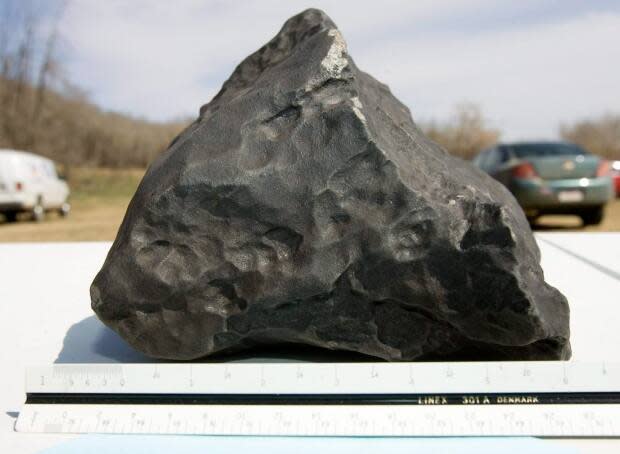Race for space rocks: Meteorite hunters have good chance for success in Alberta, researcher says

If this week's big flash in the early morning sky has you itching to hunt for meteorites, you're not alone. But for Alberta's scientific community, space detritus has more value than being a stellar addition to your rock collection.
At the University of Alberta, for example, researchers are using bits of space debris to figure out how to eventually handle parcels arriving on Earth from far, far away.
"We're trying to advance curation techniques — that is, how do we handle this extra terrestrial material without contaminating it by the terrestrial environment," Patrick Hill, a planetary geologist at the U of A, told CBC Radio's Edmonton AM on Wednesday.
"[That will] prepare us for sample-return missions such as Perseverence on Mars or Hayabusa 2 or OSIRIS-REx. And so that's our main interest. But meteorites provide us with a wealth of information about the history of the solar system and the geology of the solar system."
Researchers are now checking images collected on an array of specialized cameras that document the night sky, looking for clues about the location of the fireball, which was reportedly seen in places like Jasper, Calgary and Saskatchewan.
Those images will also offer insight into whether any fragments of the meteor survived the trip through the atmosphere to land on the ground, Hill said.
"As long as it's captured by two or more of our cameras — because we know the GPS location of those cameras and the orientation in the night sky, we can, in essence, triangulate and the hone in on where this happened in Alberta," he said.
Following the brilliant streak, captured on umpteen dashboard and doorbell cameras, the meteor enters what scientists call "the dark flight" of its freefall to the Earth's surface. Using speed and altitude data from the cameras, scientists will try to figure out what might have made it to the ground.
"There's still some uncertainties in our models about powering down the exact location of where this happened and if any debris was formed. But if so, yes, it most likely would have fallen in Alberta," Hill added.
For those who go hunting, Hill said a meteorite will be dark black or brown, with an eggshell-like outer layer, created during its fall through the sky.

Because nearly all meteorites contain iron, nickel or other metals, they will be fairly heavy for their size — and they should be magnetic, he said.
As for size, Hill said it could vary between a couple of centimetres to a metre or more.
A meteorite that falls on private property belongs to the landowner, while space debris that ends up on roads or public land falls under the finders-keepers principle, Hill said.
But if you really want to know what you've found, you'll need to call in the experts. The U of A science faculty has a website titled Meteorites (and meteowrongs) to help guide people through the process.
"Usually we work with the finder because the value of these meteorites comes from the classification," he said.
"For example, they could be much more valuable, like lunar meteorites or Martian meteorites, where something hit Mars or the moon and that debris has been sent to Earth."

